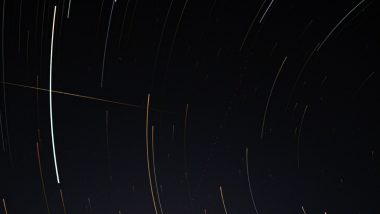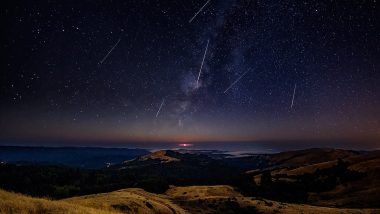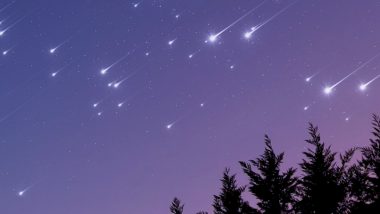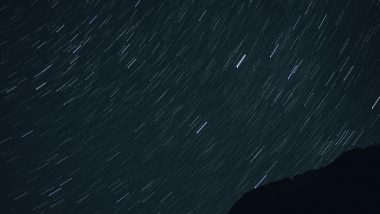The Draconid meteor shower peaked on Wednesday evening giving sky lovers a stunning view of shooting stars. Those who missed today, need not worry, on Thursday again you have a chance to see it. The American Meteor Society considers a Draconis as the variable meteor shower, which means they are not very exciting but produces a few shooting stars per hour. However, on some rare occasion, they produce strong activity. They are named after the constellation of Draco the dragon and is also known as Giacobinids. Meanwhile, people have taken to Twitter sharing beautiful pictures of the night show up there. Draconid Meteor Shower 2020 Dates in India: Know When, Where and How to Watch The Beautiful Display Tonight!
The Draconids occur when the Earth passes through trails of debris left behind by past visits from the comet 21P/Giacobini-Zinner. AMS reports that our planet is predicted to pass through two trails of dust and other detritus the space snowball left behind during its trips to the inner solar system all the way back in 1704 and 1711. Perseid Meteor Shower Photos: Netizens Share Beautiful Pics From One of the Most Active Annual Celestial Event.
Draconids Meteor Shower 2020!
I got this beauty last night. #draconids pic.twitter.com/FOR0Vnog74
— Alfredo Juárez (@alfrekjv) October 8, 2020
A Great Show Up There!
Star Trails, a sole #Draconids meteor and a Police helicopter.
🚀 #Astrophotography pic.twitter.com/jxrpdv3AZE
— Dave West (@OfficialMr_West) October 9, 2020
Looks Magical!
Went out to see the #draconid #meteor shower last night and actually saw one burn up in the atmosphere pic.twitter.com/rc5rUtBv8b
— Foot in mouth disorder (@andrewrwelsh) October 9, 2020
What A Beauty!
Large meteoroid sighted over Victoria in Tamaulipas, Mexico.pic.twitter.com/12Y1gp3IWU
— Disclose.tv 🚨 (@disclosetv) October 8, 2020
Unbelievable!
Huge fireball lights up the sky in Monterrey, Mexico. According to the Mexican Civil Defense Ministry, the object was probably a meteorite breaking up as it entered earth's atmosphere pic.twitter.com/CenCPCoDYR
— Reuters (@Reuters) October 9, 2020
The Draconids occur when the Earth passes through trails of debris left behind by visits from the comet 21P/Giacobini-Zinner. According to AMS reports, our planet will pass through two trails of dust and other detritus the space snowball left behind during its trips to the inner solar system all the way back in 1704 and 1711. Astronomer Tony Phillips estimates that fans should be able to see as many as 10 per hour in the northern hemisphere. To get a glimpse of Draconids, you have to go outside at night. Try to be away from pollution to get a good view of the sky. Your eyes will take a little time to adjust to the darkness and then you ca find Draco in the sky.
(The above story first appeared on LatestLY on Oct 09, 2020 06:41 PM IST. For more news and updates on politics, world, sports, entertainment and lifestyle, log on to our website latestly.com).













 Quickly
Quickly




















